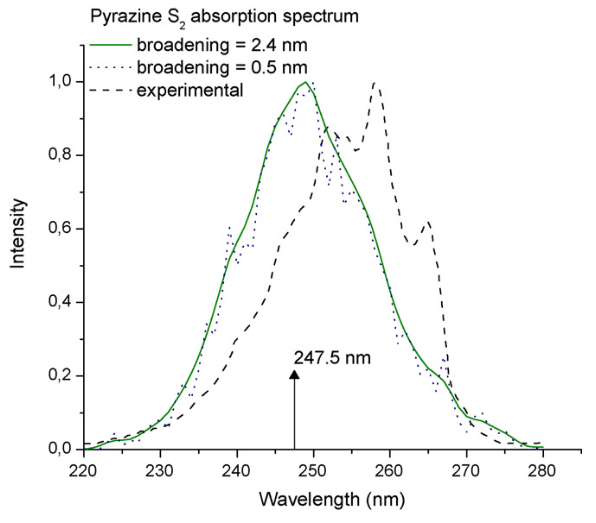Newton-X
Newton-X: Exploring Molecules in Motion
What happens when sunlight hits a solar panel—or even your skin? To answer questions like this, scientists need tools that can simulate how molecules behave when exposed to light. One of those tools is Newton-X, a software platform that I help develop and maintain.
Newton-X was first created by Mario Barbatti and released in 2007.[1] Since then, it has grown continuously, with contributions from dozens of researchers around the world.[2] Today, it remains a leading program for simulating how molecules move and change when light interacts with them.
Why study molecules and light?
When a molecule absorbs light, it gets “excited.” This process is at the heart of many phenomena:
- It allows scientists to identify molecules, because each has a unique pattern of light absorption—like a fingerprint.
- It makes solar panels work, by capturing sunlight and converting it into electricity.
- It even affects biology, from photosynthesis in plants to how our eyes detect light.
To understand these processes, scientists want to know not only which light is absorbed, but also what happens next. How does the molecule respond in the first tiny fractions of a second? Does it simply relax back down, or does it transform into something new?
Simulating motion: nonadiabatic dynamics
One powerful way to answer these questions is through nonadiabatic dynamics. This approach follows a molecule’s movements step by step in time after it absorbs light.
Think of it as pressing “play” on a molecular movie. We can watch how long it takes for the system to release its energy, whether it changes form along the way, and how the process unfolds. Insights like these open doors to controlling molecular behavior—and ultimately designing new technologies.
How Newton-X works
Newton-X was built to run these kinds of simulations. Instead of treating a molecule as frozen in space, the software acknowledges that molecules are always in motion. They vibrate and shift because of their natural energy.
To capture this reality, Newton-X generates many variations of a molecule’s structure, each slightly different from the “most stable” form, the one with the smallest possible energy. These variations can be used in two ways:
To create spectra.
A spectrum is a plot showing which energies of light a molecule absorbs, and how strongly. This information can be used to identify the molecule.
Figure: Absorption spectrum of the pyrazine cation. Adapted from [1].To start simulations.
From the spectrum, we can choose the energy of light we want to use and ask Newton-X to generate the corresponding starting conditions—pairs of geometries and velocities that define the molecule at the moment of excitation. Each of these is called an initial condition, and each leads to a trajectory when the simulation begins.
Following the trajectories
Newton-X uses a method called Fewest Switches Surface Hopping (FSSH) (Wikipedia). In simple terms, this method assumes that a molecule can “hop” between different electronic states as it moves. Most of the time, it stays on one surface (or state), but when certain conditions are met, it may switch to another. By following many trajectories where these hops can happen, FSSH gives a realistic picture of how molecules behave after absorbing light.
In practice, this means running hundreds of trajectories, each representing one possible path the molecule could take. At every step, Newton-X sends the molecule’s geometry to specialized external programs that calculate the electrons’ energies and forces. With this information, the atoms can be moved forward in time. After running all trajectories, we combine them to build a picture of how the molecule behaves in reality.
This knowledge helps scientists design new materials, improve solar energy harvesting, and better understand fundamental processes in chemistry and biology.
A collaborative effort
Newton-X has been in development for almost 20 years. It is the result of contributions from many researchers, and it continues to evolve with new features and improvements. Today, I manage the project in the Light & Molecules group, working closely with Professor Mario Barbatti and an international community of developers.
You can learn more and explore the project on the official website: newtonx.org.
References
Barbatti, M.; Granucci, G.; Persico, M.; Ruckenbauer, M.; Vazdar, M.; Eckert-Maksić, M.; Lischka, H. The On-the-Fly Surface-Hopping Program System Newton-X: Application to Ab Initio Simulation of the Nonadiabatic Photodynamics of Benchmark Systems. Journal of Photochemistry and Photobiology A: Chemistry 2007, 190 (2), 228–240. DOI:/10.1016/j.jphotochem.2006.12.008.
Barbatti, M.; Bondanza, M.; Crespo-Otero, R.; Demoulin, B.; Dral, P. O.; Granucci, G.; Kossoski, F.; Lischka, H.; Mennucci, B.; Mukherjee, S.; Pederzoli, M.; Persico, M.; Pinheiro Jr, M.; Pittner, J.; Plasser, F.; Sangiogo Gil, E.; Stojanovic, L. Newton-X Platform: New Software Developments for Surface Hopping and Nuclear Ensembles. J. Chem. Theory Comput. 2022, 18 (11), 6851–6865. DOI:https://doi.org/10.1021/acs.jctc.2c00804